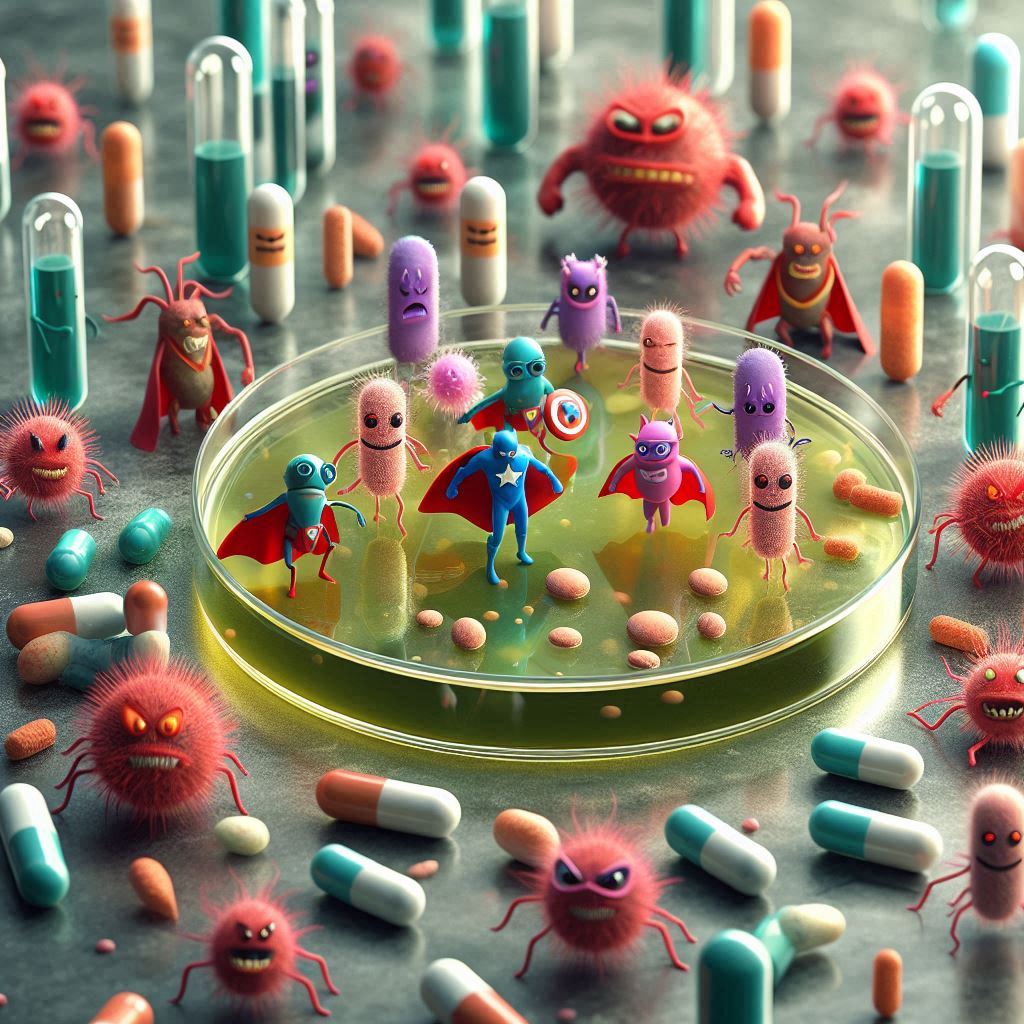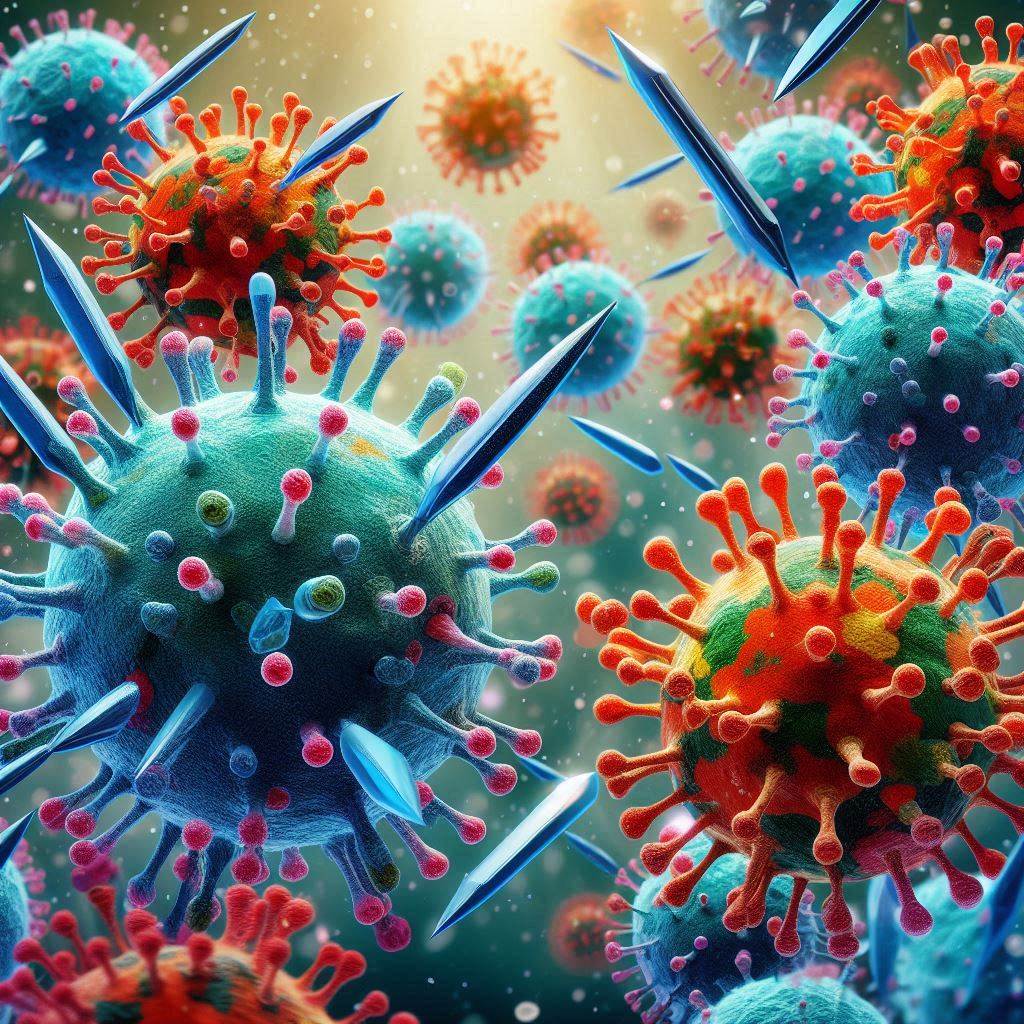Antimicrobial resistance (AMR) stands as one of the most formidable challenges in modern medicine, threatening to undo decades of progress in treating infectious diseases. Globally, AMR is responsible for an estimated 1.27 million deaths annually, with projections suggesting this number could rise to 10 million per year by 2050 if current trends continue.
This global crisis is fueled by a complex interplay of factors, including overuse and misuse of antibiotics in humans and animals, inadequate infection prevention and control, and insufficient development of new antimicrobial agents. This article delves into the intricacies of antimicrobial resistance, exploring its causes, impacts, and the urgent need for coordinated global action.
What Is Antimicrobial Resistance?
Antimicrobial resistance (AMR) occurs when microorganisms such as bacteria, viruses, fungi, and parasites evolve to resist the effects of antimicrobial drugs, such as antibiotics, antivirals, antifungals, and antiparasitics, that were once effective in treating infections caused by these pathogens. This resistance renders standard treatments ineffective, leading to persistent infections, increased spread of disease, and higher mortality rates.
Causes Of Antimicrobial Resistance
Antimicrobial resistance (AMR) is a complex phenomenon driven by various factors. Understanding these causes is crucial for developing strategies to combat AMR effectively. Here are the primary causes:
Overuse and Misuse of Antimicrobials
The most significant driver of AMR is the overuse and misuse of antibiotics and other antimicrobial drugs. This includes:
-
- Overprescription: Antibiotics are often prescribed when they are not needed, such as for viral infections like the common cold or flu.
-
- Incomplete Courses: Patients not completing their prescribed antibiotic courses can leave surviving bacteria to develop resistance.
-
- Self-medication: Using leftover antibiotics without proper medical guidance contributes to misuse.
Agricultural Practices
The extensive use of antibiotics in agriculture, particularly in livestock farming, promotes the development of resistant strains. Antibiotics are often used to promote growth and prevent disease in healthy animals, leading to the spread of resistant bacteria through the food chain.
Poor Infection Prevention and Control
Inadequate infection control measures in healthcare settings and communities facilitate the spread of resistant organisms. This includes:
-
- Poor Hygiene and Sanitation: Lack of clean water, sanitation, and hygiene in healthcare facilities and communities contributes to the spread of resistant pathogens.
-
- Inadequate Sterilization: Insufficient sterilization of medical equipment can spread resistant bacteria among patients.
Global Travel and Trade
The movement of people and goods across borders accelerates the spread of resistant strains. Travelers can carry resistant bacteria to different parts of the world, and global trade can spread contaminated food products.
Environmental Factors
The presence of antibiotics in the environment due to pharmaceutical manufacturing runoff and improper medication disposal, contributes to the development and spread of resistant bacteria in natural ecosystems.
Lack of New Antibiotics
The slow pace of developing new antibiotics limits the options for treating resistant infections. Pharmaceutical companies have reduced investment in antibiotic research due to lower financial incentives compared to other drugs.
Inadequate Surveillance and Reporting
Insufficient monitoring and reporting of antibiotic use and resistance patterns hinder the ability to respond effectively to emerging resistance threats.
Combating AMR requires a multifaceted approach, including promoting the judicious use of antibiotics, enhancing infection prevention and control measures, improving agricultural practices, investing in the development of new antimicrobials, and strengthening global surveillance systems.
Mechanism Of Antimicrobial Resistance

Antimicrobial resistance (AMR) arises through various mechanisms by which microorganisms evade the effects of antimicrobial drugs. Understanding these mechanisms is essential for developing strategies to counteract resistance. Here are the primary mechanisms:
-
- Enzymatic Degradation
-
- Beta-lactamases: Some bacteria produce enzymes, such as beta-lactamases, that break down beta-lactam antibiotics (e.g., penicillins, cephalosporins) before they can exert their effects.
-
- Carbapenemases: These are enzymes that degrade carbapenem antibiotics, which are often used as a last resort for treating resistant infections.
-
- Efflux Pumps
-
- Bacteria can develop efflux pumps, which are proteins that actively expel antimicrobial agents from the cell before they can reach their target. This reduces the intracellular concentration of the drug, rendering it ineffective.
-
- Efflux pumps can provide resistance to multiple classes of antibiotics simultaneously.
-
- Target Modification
Bacteria can alter the target sites of antibiotics, reducing the drug’s ability to bind and inhibit the intended function. For example:
-
- Methicillin-resistant Staphylococcus aureus (MRSA): Alters penicillin-binding proteins, rendering beta-lactam antibiotics ineffective.
-
- Vancomycin-resistant Enterococci (VRE): Modifies the target site of vancomycin.
-
- Reduced Permeability
Some bacteria can change their cell wall or membrane structure to reduce the uptake of antibiotics. This makes it more difficult for the drug to penetrate the bacterial cell and reach its target. For instance, changes in the outer membrane proteins of Gram-negative bacteria can prevent antibiotics from entering the cell.
-
- Bypass Pathways
Bacteria can develop alternative biochemical pathways to bypass the metabolic steps inhibited by the antibiotic. This allows them to continue growing even in the presence of the drug. For example, bacteria might acquire genes that provide an alternative enzyme to circumvent the inhibited one.
-
- Genetic Mutations
Spontaneous mutations in bacterial DNA can lead to resistance. These mutations can occur in the genes encoding target sites, efflux pumps, or enzymes involved in drug metabolism. Mutations can be propagated quickly, especially under selective pressure from antibiotic use.
-
- Horizontal Gene Transfer
Bacteria can acquire resistance genes from other bacteria through processes such as conjugation (transfer of plasmids), transformation (uptake of naked DNA), and transduction (transfer by bacteriophages). This allows for the rapid spread of resistance traits within and between bacterial populations.
-
- Biofilm Formation
Bacteria within biofilms (communities of bacteria adhering to surfaces) are more resistant to antibiotics. Biofilms provide a protective environment that limits drug penetration and facilitates the exchange of resistance genes. Biofilms are commonly found in chronic infections and on medical devices.
How To Prevent Antimicrobial Resistance?
Preventing antimicrobial resistance (AMR) requires a comprehensive and coordinated approach across various sectors. Here are key strategies to prevent AMR:
Prudent Use of Antimicrobials
-
- Healthcare providers should prescribe antibiotics only when necessary and based on accurate diagnoses. It is crucial to avoid unnecessary use for viral infections like the common cold or flu.
-
- Clinicians should adhere to established treatment guidelines and use antibiotics that are appropriate for the specific infection.
-
- Patients should complete their prescribed antibiotic courses, even if they start feeling better, to ensure all bacteria are eliminated and resistance does not develop.
Infection Prevention and Control
-
- Improving hygiene practices, such as regular handwashing with soap and water, can reduce the spread of infections.
-
- Vaccinations prevent infections, reducing the need for antibiotics and the chance for resistance to develop.
-
- Hospitals should implement stringent infection control measures, including sterilization of medical equipment and isolation of patients with resistant infections.
Surveillance and Monitoring
-
- Establish and maintain robust surveillance systems to monitor the prevalence of AMR in different regions and healthcare settings.
-
- Promote the sharing of data on antibiotic resistance patterns globally to track emerging threats and coordinate responses.
Research and Development
Invest in the research and development of new antibiotics and alternative treatments to stay ahead of evolving resistant strains.
Develop rapid diagnostic tools to accurately identify infections and determine the most effective treatment, reducing unnecessary antibiotic use.
Public Awareness and Education
-
- Educate the public about the dangers of AMR and the importance of using antibiotics responsibly.
-
- Engage communities in efforts to improve hygiene, vaccination rates, and responsible medication use.
What Are The Impacts Of Antimicrobial Resistance On Health?

Antimicrobial resistance (AMR) has profound and far-reaching impacts on health, affecting individuals, healthcare systems, and global public health. Here are the key health impacts:
Increased Mortality Rates
One of the most severe consequences of AMR is the increase in mortality rates. Infections that were once treatable with standard antibiotics can now become fatal. Resistant infections are harder to cure and often require more potent, last-resort antibiotics, which may not always be effective.
Longer Hospital Stays
Patients with resistant infections often experience longer hospital stays due to the difficulty in treating their infections. This not only affects their recovery and quality of life but also places a greater burden on healthcare facilities and resources.
Higher Medical Costs
Treating resistant infections is significantly more expensive than treating non-resistant ones. The need for more expensive medications, extended hospital stays, and additional medical interventions all contribute to higher healthcare costs.
Complications in Medical Procedures
AMR complicates a wide range of medical procedures. Surgeries, cancer treatments, organ transplants, and other procedures that rely on effective antibiotics to prevent and treat infections are at greater risk. Without reliable antibiotics, the success rates of these procedures decrease, and the risk of complications rises.
Increased Spread of Infections
Resistant infections are more difficult to control and can spread more easily within communities and healthcare settings. This can lead to outbreaks of diseases that are harder to manage and contain, putting more people at risk.
Read: Obesity And Metabolic Syndrome: 5 Efficient Management Techniques
Conclusion
Antimicrobial resistance is a formidable enemy, but it is not insurmountable. Through responsible antibiotic use, improved infection control, innovative research, and global cooperation, we can turn the tide against this growing threat. It’s a collective battle that requires action from every individual, healthcare provider, farmer, and policymaker.
